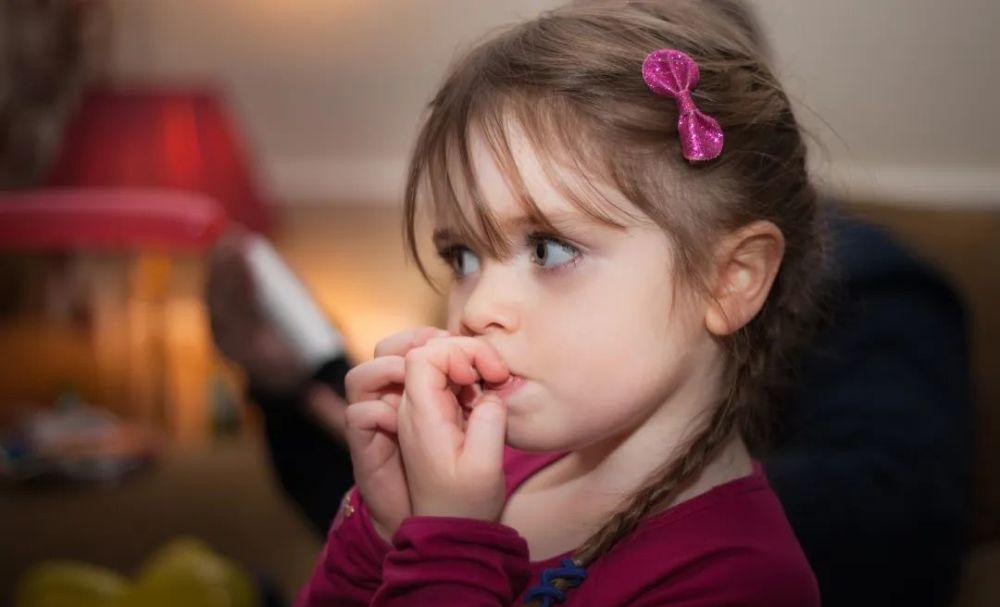What is a habit?
Habits are behaviors that children do over and over again with little thought.

Children's habits usually don't have to worry.
Children's habits usually involve touching or fiddling with certain parts of their face or body. Sometimes children are aware of their habits, sometimes they don't.
Some common habits in children are:
Suck your finger, thumb, or dummy
Bite or cut your nails
Rotate and pull hair
Dig their nose or sores
Dig out their lips or the inside of their cheeks
Chew items such as pencils and clothes
molars.
How habits begin
Habits can comfort children. Sucking is a good example. As toddlers leave the infant stage, habits like thumb sucking can be a way to relieve stress or anxiety.
Sometimes habits arise because children are bored. In other words, behavior is the way children entertain themselves. For example, children are more likely to bite their nails when they watch TV or do nothing than when they feel anxious.
Sometimes habits start for practical reasons, but continue to exist after the actual causes disappear. For example, young children with colds often dig up their noses to get rid of them. Children who continue picking even after learning to blow their nose may have a habit.
You are a role model for your child. If you see your child starting to develop a habit, ask yourself if it's a habit of your own. For example, nail biting may spread throughout the home.
Note: Some toddlers seem to take comfort from some common but slightly unusual behaviors, including body shaking, head rolling, and head bumps. Most children stop this behavior by age 5.
Break the habit
Most habits disappear on their own. However, if your child's habits get in the way of daily activities, become embarrassing, or even cause some harm, you may need to take some steps.
For example, thumb sucking or fingers is common and usually not a problem. But your child may have been sucking his fingers. If this gets in the way of talking or eating, or if your child is being teased by his peers for it, it might be time to break the habit.
Some tips to break habits
Gently remind your child of this habit. For example, if your child sucks on a sleeve, you can say, "Please don't chew your sleeve – it's a little hard to eat."
Try to encourage your child to do other things in their free time. For example, you can encourage your child to have toys with removable parts while watching TV. Or you can recommend a mobile game, such as "Incy Wincy Spider".
Try to find out why your child is developing this habit and come up with alternatives. For example, if your child is writhing during urination or defecation instead of going to the toilet, you can say, 'Do you need to go to the toilet?' Tell me in your words'.
If your child has two habits, such as thumb sucking and pulling hair, focus on stopping one of them. You may find that if you can stop sucking your thumb, then plucking may also stop.
When to get help with habits
Around the age of 3, thumb sucking and finger sucking can become a problem with the development of children's teeth. If your child is over 3 years old and still sucking their fingers, talk to your pharmacist about using other methods, such as plaster or paint solution. The solution makes the fingers taste bitter. You can also consult your dentist about using the upper jaw barrier. The device makes it uncomfortable for children to suck their thumbs or fingers.
If you think anxiety may be the cause behind habits, you may need to deal with the cause of anxiety. Talk to your GP about how to refer him or her to another health professional. For example, a psychologist can teach your child some simple steps to stop the habit.
Habits of children with disabilities, autism or other additional needs
Children with disabilities, autism, or other additional needs may have more habits than normally developing children, or their habits may be more pronounced. If you are looking for more information, a psychologist or other specialist with experience with additional needs can help.
Habit or twitch?
Twitching is not a habit. Convulsions are muscle spasms that cause jerky movements that your child may seem uncontrollable. Examples include repeated blinking, facial twitches, and arm or shoulder twitches. Sometimes the tics are caused by disorders such as Turrett syndrome or stress.
Your child may stop twitching for a short period of time, but when your child stops thinking, the twitching will resume. If you feel that the tics are painful for your child, it is best to seek the help of a health professional. Your GP is always a good place to start.